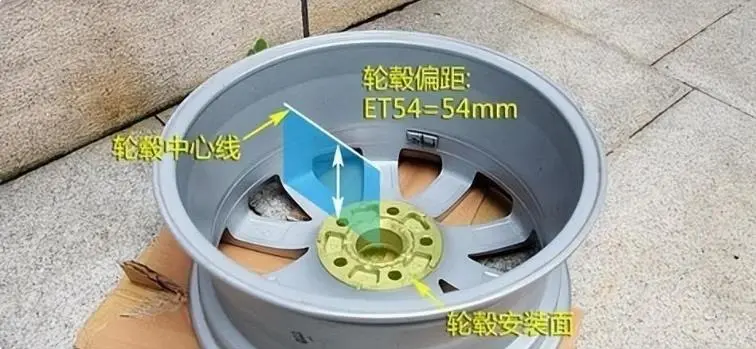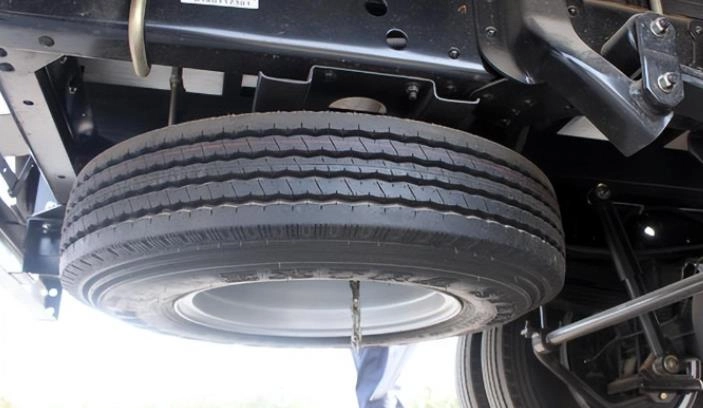Can't fit your new underwire tire? That's the wrong size
Steel rim, also known as wheel rim or wheel hub, refers to the tire inner profile supporting role, cylindrical, center mounted on the axle of the metal parts, its main role is to support the tire, buffer external impact, tire and road contact, to ensure the vehicle driving.

The steel ring is a part of the wheel end system of the trailer axle, the inside of which is connected to the trailer axle by bolts and other parts, and the outside is used to install the tire. Under normal circumstances, when the owner buys the trailer axle, the steel ring is well matched. But if the owner wants to replace the steel ring halfway, it needs to pay extra attention.
We often encounter some owners come to consult, how can the newly bought steel rim or tire not be installed?
In fact, there are no more than two reasons for this problem: the steel ring does not match the tire, or the steel ring does not match the trailer axle.
In such a case, I am afraid there is no choice but to buy again. In order to ensure that the newly purchased steel rim or tire can be successfully installed, it is necessary to determine the relevant size and parameters before purchase. Take a look with the DARO trailer axle.
1, trailer axle size parameters
Change the rim or tire, have to consider the size of the trailer axle parameters, only with the trailer axle matching, in order to ensure the subsequent installation problems.
Generally, the trailer axle produced by the regular manufacturer will bring a user manual when it leaves the factory, which details the parameters of the steel ring adapted to the trailer axle, and users can refer to it.
If you accidentally lose the product manual, users can also find the official website of the trailer axle factory from the Internet, dial 400 for consultation, or directly leave a message under the official public number or official video number.
In this way, the data obtained from the manufacturer is generally the most accurate.

2, steel ring size parameters
(1) Look at the vehicle configuration table. Regarding the size of the steel ring, the vehicle configuration table will be clearly marked, if not clear, you can directly find the vehicle configuration table query.
(2) Look at the tire specifications. Generally the side of the tire can be found a string of numbers or symbols, the number after the "R" is not only the size of the tire, but also the size of the steel rim, for example, "315/80 R 22.5", meaning 22.5 inches of steel rim diameter.
(3) Look at the old steel ring mark. After determining the "R" value, it is necessary to determine the "J" value, that is, the width of the steel ring, which generally refers to the distance between the flange on both sides of the wheel hub.
Note that this distance ≠ tire width, can not be obtained from the tire, can be found from the rim mark.

(4) Determine the center hole, hole number and PCD.
The center hole needs to be consistent with the size of the trailer axle head, which is an important value for the smooth installation of the steel ring, which is too small to install, and too large to shake easily.
The number of holes refers to the number of bolt holes of the steel ring, the original car has several bolts, and the steel ring of several holes needs to be selected when replacing.
PCD refers to the pitch circle diameter of the bolt hole of the steel ring, that is, the diameter of the circle surrounded by the bolt hole. This value is combined with the number of holes to determine the hub fixation.
(5) Offset ET
If the owner wants to change the style of the steel ring, it is necessary to pay attention to the offset ET value, which refers to the distance between the center line of the steel ring and the mounting surface. Take a look at the following picture to understand better:
The ET value can be zero, or it can be positive or negative, which affects whether the steel ring is indented or protruded after modification, that is, the "pressing depth" of the steel ring.
If the owner measures it himself, he needs to pay attention to the conversion between units, 1 inch = 2.54 cm = 25.4 mm.
3, tire size parameters
Just when we were talking about the size of the steel rim, we briefly mentioned the tire specification logo. In general, different manufacturers, specification marks will be more or less different, and its units are generally inch or millimeter based, which are connected.

In China, tire specifications are mainly divided into metric, British and traditional two types:
(1) Metric tire size identification:
Take "315/80 R 22.5 16PR 152/148 M" as an example, "315" refers to the width of the cross-section in millimeters, "80" refers to the tire flat ratio of 80% or 80 series, "R" refers to the radial tire, "22.5" refers to the rim diameter of 22.5 inches, "16PR" refers to the tire strength, "315/80 m". "152" refers to the load index when a single wheel is used, "148" refers to the load index when a double wheel is used, and "M" refers to the speed identifier.
(2) Tire size identification of imperial specifications:
Take "11.00 R 20 16PR 150/146 L" as an example, "11.00" refers to the width of the cross-section in inches, "R" refers to the radial tire, "20" refers to the diameter of the steel rim in inches, "16PR" is the tire strength mark, "150" refers to the load index when using a single wheel. "146" refers to the load index when the double wheel is used, and "L" is the speed identifier.
(3) Traditional tire size identification:
Take "12 R 22.5 16PR 150/147 L" as an example, "12" refers to the width of the cross-section in inches, "R" refers to the radial tire, "22.5" refers to the diameter of the steel rim in inches, "16PR" is the tire strength mark, "150" refers to the load index when using a single wheel. "147" refers to the load index when the double wheel is used, and "L" is the speed identifier.







